This post is hopefully the first in a series of posts that will look at some of the therapeutic treatments and medical practices used in early modern medicine.
Dr Sara Read
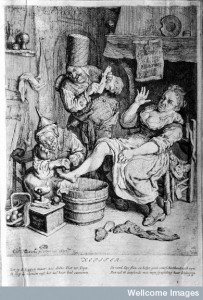 With the interest in the practice of cupping in the press recently caused by celebrities appearing with the tell-tale circular bruises on their backs, I thought it timely to have a look at some of the ways that cupping was used as a medical treatment in the seventeenth century.
With the interest in the practice of cupping in the press recently caused by celebrities appearing with the tell-tale circular bruises on their backs, I thought it timely to have a look at some of the ways that cupping was used as a medical treatment in the seventeenth century.
The practice is an ancient one, but this post is concerned with how it was applied specifically in our time period. Who performed it? Who was it used for? What sort of diseases was it prescribed for? What was the logic behind its use?
When a patient presented with a disease which was assumed to be caused by too much blood, then cupping might be prescribed. The position on the body in which the cupping glasses were to be applied was connected to the disease it was attempting to cure. They could be place anywhere from head to toe. The air in the glass was exhausted by burning a candle and the vacuum created in the glass caused the skin to be sucked into the glass on application. The idea was then that the excess humour was encouraged to the surface for easier dissipation. Philip K. Wilson has described cupping as a ‘common variety of bloodletting’.1 This is because cupping was used with or without scarification being done first. Scarification (cutting or scratching the skin) would cause bleeding which was then accelerated by the cupping, and the blood removed would gather in the glass. This seems to be what is being depicted in the image below. If the skin was not broken, this was sometimes called ‘dry-cupping’ and resulted in a blister, full of unwanted humours.
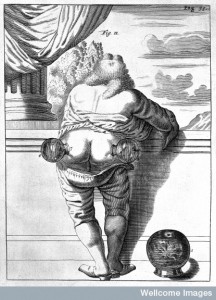 As well as being used as a treatment by trained medical doctors, cupping was also practised by the same barber-surgeons who offered bloodletting and teeth-pulling. It was also a treatment offered by travelling mountebanks who would do it in public places surrounded by a crowd of onlookers. One so-called ‘quack’ doctor, John Evans produced an advertisement for his cures at his ‘hummums’ or baths. Baths came to be associated with cupping. In Brownlow Street, Drury Lane, you could take a sweat treatment in a hot bath, or a cold bath depending on your symptoms and also receive ‘fine cupping’ with reassuringly clean linen, for three shillings for one, or two for just five shillings. Alternatively Evans was prepared to come to your home if you required to be ‘cupt’ in your own chamber. The fact that Evans points out that you can expect to be well attended by servants of both sexes and that you could hire a room for the night, together with the warning that his establishment could be located by ‘the two spikes before the door’ to prevent mistakes, probably hints at the other function of the bath house as a brothel.2
As well as being used as a treatment by trained medical doctors, cupping was also practised by the same barber-surgeons who offered bloodletting and teeth-pulling. It was also a treatment offered by travelling mountebanks who would do it in public places surrounded by a crowd of onlookers. One so-called ‘quack’ doctor, John Evans produced an advertisement for his cures at his ‘hummums’ or baths. Baths came to be associated with cupping. In Brownlow Street, Drury Lane, you could take a sweat treatment in a hot bath, or a cold bath depending on your symptoms and also receive ‘fine cupping’ with reassuringly clean linen, for three shillings for one, or two for just five shillings. Alternatively Evans was prepared to come to your home if you required to be ‘cupt’ in your own chamber. The fact that Evans points out that you can expect to be well attended by servants of both sexes and that you could hire a room for the night, together with the warning that his establishment could be located by ‘the two spikes before the door’ to prevent mistakes, probably hints at the other function of the bath house as a brothel.2
Cupping was recommended by conventional medicine in the seventeenth century for a wide variety of diseases. It was thought particularly useful in cases of chest infection. Jean Feyens recommended cupping for many conditions which were caused by having too much wind in the body. If you had headaches so-caused, he said, then cupping glasses should be applied to the head, without bleeding.3 Alternatively, if wind caused you to suffer bloating or a ‘puffing of the stomach’ then ‘a large Cupping-glass applied three or four times without Scarification to the belly, so that it may comprehend the Navel, doth often make a perfect Cure’.4 Feyens does warn that cupping won’t help much in a case of colic, however.5 Lazare Rivière’s mid-seventeenth century treatise on the diseases of women described how to use cupping to treat ‘sickness of the womb’.
The sick woman must be laid upon the bed in such a posture that her neck and shoulders lie high and sloping, but her thighs and privy parts lie low, so the womb can be more easily reduced. Then must her lower parts be tied very hard so as to cause pain. Likewise they must be well rubbed and chafed. large cupping glasses were then to be set on her hips and pubic area. Take care not to apply a cupping glass upon the patient’s navel, which many ignorant are wont to do, for that will draw the womb upwards again.6
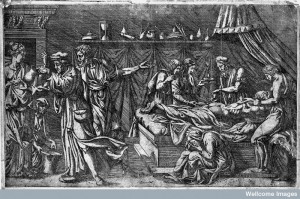 Rivière’s comments make it clear that some skill was needed to apply cupping glasses to best effect. The passing reference to the ‘ignorant’ who wrongly apply treatment is a common theme in medical treatises of prominent physicians at the time, who were keen to distance themselves from quacks like Evans. Another gynaecological complaint for which Rivière prescribed cupping was heavy periods. Here he suggested that ‘Rubbings, binding and cupping-glasses are also good, especially if the cupping-glasses be fastened upon her breasts’.7
Rivière’s comments make it clear that some skill was needed to apply cupping glasses to best effect. The passing reference to the ‘ignorant’ who wrongly apply treatment is a common theme in medical treatises of prominent physicians at the time, who were keen to distance themselves from quacks like Evans. Another gynaecological complaint for which Rivière prescribed cupping was heavy periods. Here he suggested that ‘Rubbings, binding and cupping-glasses are also good, especially if the cupping-glasses be fastened upon her breasts’.7
As can be seen from these examples, while cupping was often seen as a gentler alternative to traditional phlebotomy, the fact that it was often done in combination with scratching the skin, rubbing and chafing it, means that it was probably just as unpleasant an option. Its availability at baths houses and such, suggests that it was a treatment that early modern people might seek out if they felt it might be helpful in rebalancing their humours.
1 Philip K. Wilson, ‘Acquiring Surgical Know-how: Occupational and Lay Instruction in Early Eighteenth-Century London’, in The Popularization of Medicine: 1650-1850, ed. by Roy Porter (Routledge, 1992), p. 46.
2 John Evans, John Evans, his hummums is in Brownlow-Street in Drury-Lane (after 1679).
3 A New and Needful Treatise of Spirits and Wind Offending Man’s Body, trans William Rowland (London: Printed by J.M. for Benjamin Billingsley and Obadiah Blagrave, 1668), p. 67.
4 Ibid., p. 86.
5 Ibid., p. 81.
6 Lazare Rivière, ‘Six Hundred Miseries’: The Seventeenth Century Womb : Book 15 of the ‘Practice of Physick’, trans by Nicholas Culpeper, ed by John Lloyd Burton (RCOG, 2004), p. 74
7 Ibid., p. 57.
© Copyright Sara Read, all rights reserved.
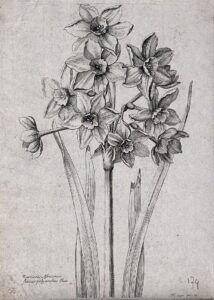
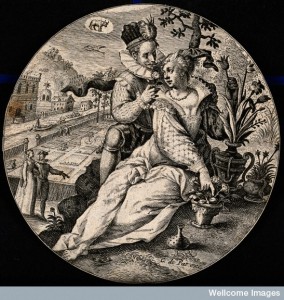
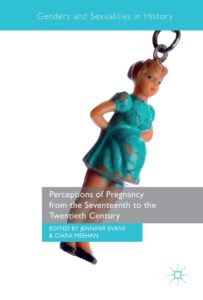
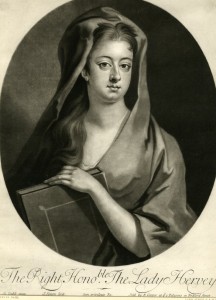

Amazingly, when I tried acupuncture a few years ago, I saw “cupping” on the list of options available to patients. When I asked the acupuncturist to explain this to me, he related it to ancient humoural theory, which is still part of traditional Chinese medicine as it relates to the vital energy called “chi.” The closest thing I can relate to chi in western medical history is something called “animal spirits” believed to course through the body in ancient and medieval times. Then, as Harvey discovered blood circulation and Willis discovered nerves by the late seventeenth century, they were thought to move through these pathways. I’m not sure when western medicine stopped believing in the animal spirits or vapors, but it seems to still be part of some Asian medical treatments (in some form) today.
That is really interesting Laura, I had never thought about the similarity between animal/vital spirits and chi before!
The Humoural theory of unani/greek system of medicine has been used as diagnostic tool with the help of cupping procedure. Avicenna in canon of medicine has described four different types of humours in the body viz Blood (Dam), Phlegm (Balgam), Yellow Bile (Safra) or Black bile (Sauda). Until these humours are in balanced state a person is healthy . any imbalances in the humours cause disease.
Wet Cupping in which the fluid is removed is not just blood but comprise of any of the imbalanced humour. based on the dominant fluid oozing out the diseases are diagnosed. The procedure of removal of the fluid is called Hijama. This is practiced by professionally qualified unani practitioners world over.
There is a documentary airing on BBC 2 (UK) at the monent (27 June) called ‘who were the Greeks?’ which has shown a wonderful selection of Greek medical tools. The expert on the show explained that, although this wasn’t how cupping was rationalised then, the effect of the trauma on the skin of the cupping process is that the body would flood the system with white blood cells (which fight infection) and these spread through the body not just the area of cupping. From this we can see there is an explanation modern medical thought or the therapeutic benefits of this treatment.
V interesting.
oh very interesting!